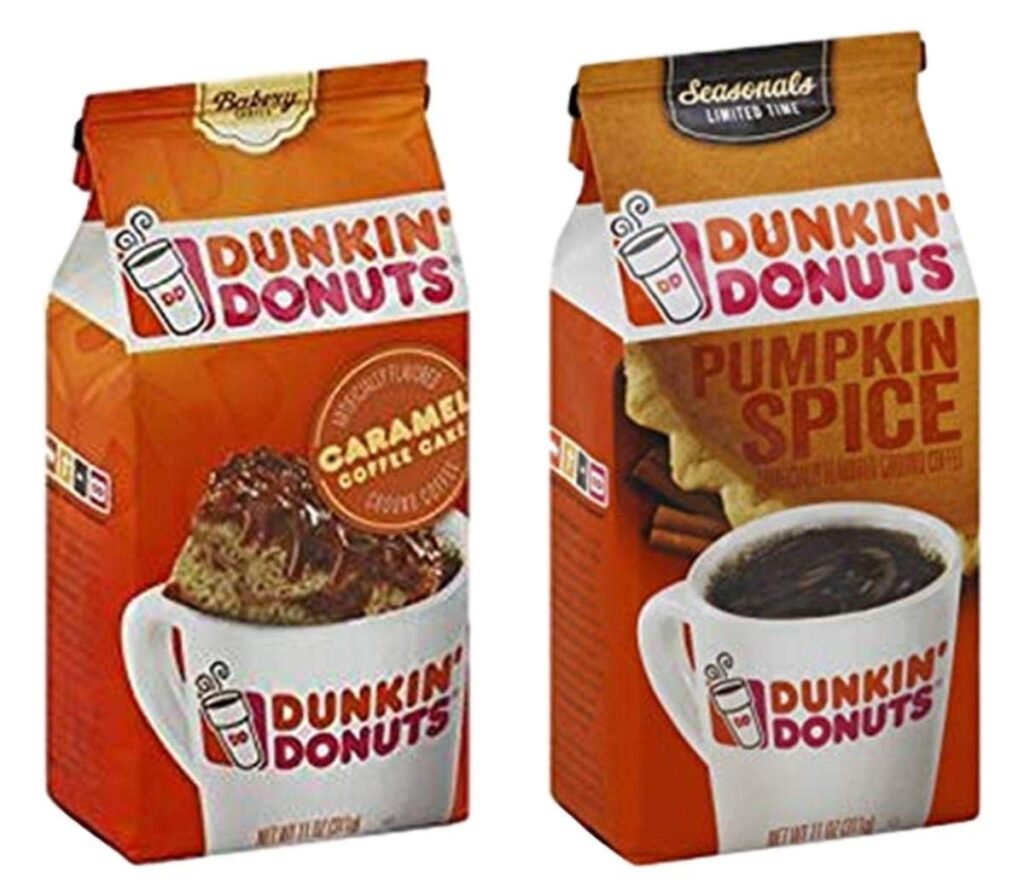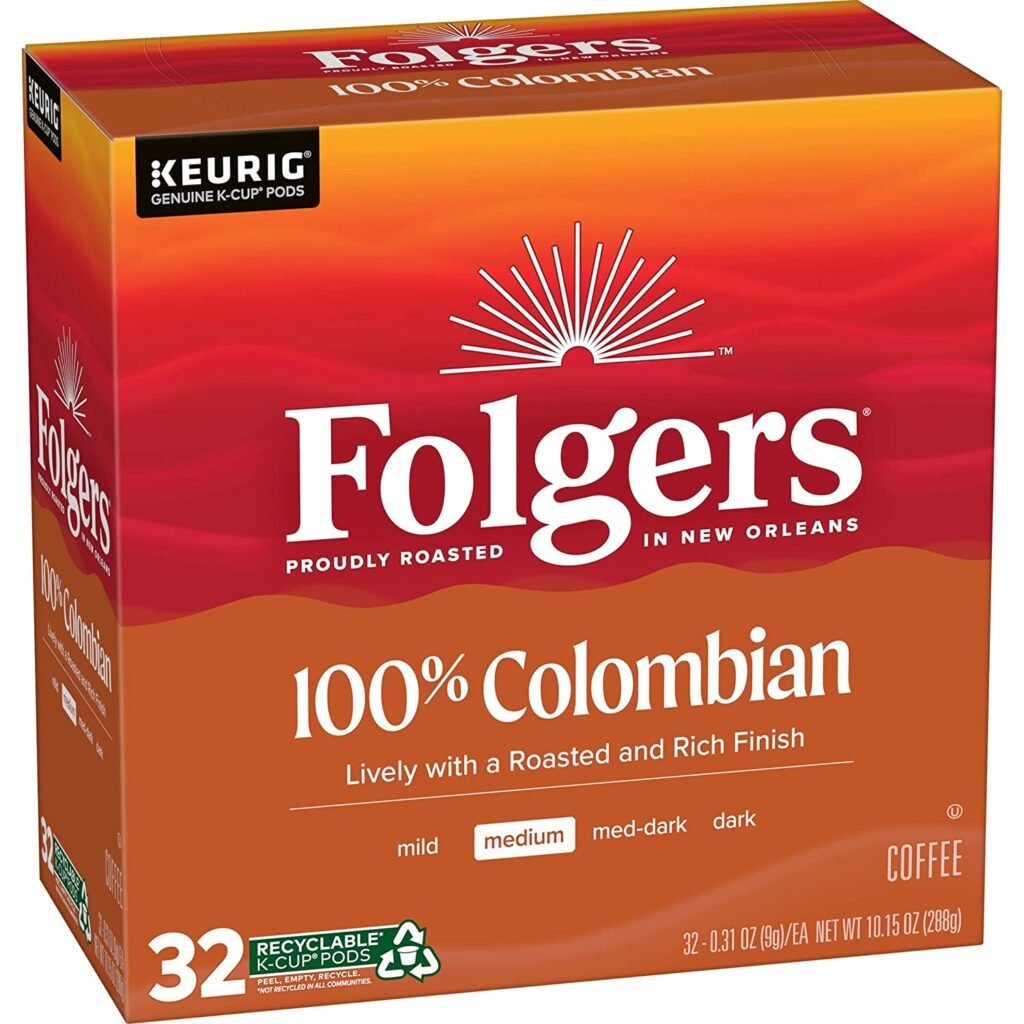The purpose of this article is to provide a brief overview and delve into the significance of ground coffee, coffee beans, and coffee K pods. These three coffee options play a vital role in the world of coffee enthusiasts and cater to different preferences and brewing methods.
By understanding their characteristics and benefits, readers can make informed choices about their coffee consumption.
We will explore the definition and extraction process of ground coffee, highlighting its convenience and versatility.
Additionally, we will delve into coffee beans, discussing their origins, varieties, and the roasting process that enhances their flavor.
Lastly, we will examine coffee K pods, explaining their single-serve convenience and compatibility with specific machines.
Throughout the article, we will also touch upon the relevance of organic options and sustainable alternatives within each category.
With this comprehensive introduction, readers will gain a deeper understanding of ground coffee, coffee beans, and coffee K pods, empowering them to make the most satisfying coffee choices based on their preferences.

Ground Coffee
Definition and explanation of ground coffee:
Ground coffee refers to coffee beans that have been finely processed for brewing, resulting in a convenient and ready-to-use form.
Benefits and advantages of using ground coffee:
Ground coffee offers convenience and time-saving benefits, as it can be easily used in various brewing methods, such as drip coffee makers and espresso machines.
Different types and flavors of ground coffee available:
Ground coffee comes in a wide range of options, including various roasts, origins, and flavor profiles. Coffee lovers can choose from rich dark roasts, medium roasts, or even flavored varieties like vanilla or hazelnut.
Brewing methods for ground coffee:
Ground coffee can be brewed using different methods such as pour-over, French press, or espresso machines. Each method allows for different levels of extraction and flavor.
Tips for storing and preserving the freshness of ground coffee:
To maintain the freshness of ground coffee, it is important to store it properly. Keep it in an airtight container in a cool, dry place away from direct sunlight. Avoid storing it in the refrigerator as moisture and odors can affect the flavor.
Overall, ground coffee offers a convenient and versatile way to enjoy a cup of joe. With a plethora of types and flavors available, coffee enthusiasts can find their preferred blend. By mastering different brewing methods and storing the ground coffee properly, one can ensure a consistently flavorful and enjoyable coffee experience.
Coffee Beans
Coffee beans are the seeds of the Coffea plant and serve as the foundation for producing coffee, playing a crucial role in determining its flavor and quality.
Roasting process and its impact on coffee beans: Coffee beans undergo roasting, a crucial step that enhances their flavor, aroma, and color. The degree of roast determines the intensity and characteristics of the resulting coffee.
Grinding coffee beans for brewing: Coffee beans are ground to facilitate the extraction of flavor during brewing. The grind size varies depending on the brewing method, with finer grinds for espresso and coarser grinds for French press.
Tips for selecting and buying high-quality coffee beans: When choosing coffee beans, consider factors such as freshness, origin, roast date, and certifications like organic or fair trade. Look for reputable sources and buy whole beans for the freshest coffee experience.
Understanding the significance of coffee beans is essential for any coffee enthusiast. By exploring different varieties, origins, and the roasting process, one can appreciate the complexity and diversity of coffee flavors. Knowing how to grind beans properly and select high-quality options ensures a satisfying and flavorful coffee brewing experience.
Coffee K Pods
Explanation of coffee K pods and their convenience:
Coffee K pods, also known as coffee pods or capsules, offer a convenient and hassle-free way to brew a single cup of coffee, requiring minimal preparation and cleanup.
Introduction to single-serve coffee brewing systems:
Coffee K pods are designed for use with single-serve coffee brewing systems like Keurig, which provide quick and efficient brewing with consistent results.
Benefits and drawbacks of using coffee K pods:
Coffee K pods offer convenience, allowing users to quickly brew a cup of coffee without the need for measuring or grinding. However, they can generate more waste and may be more expensive per cup compared to traditional brewing methods.
Variety of coffee flavors and brands available in K pods:
Coffee K pods come in a wide range of flavors, roasts, and brands. Whether you prefer a bold dark roast or a flavored option like vanilla, there is a K pod to suit every taste.
Tips for choosing the right coffee K pods and using them effectively:
When selecting K pods, consider factors like roast level, flavor preferences, and certifications like organic or fair trade. Additionally, follow brewing instructions to ensure optimal taste and avoid over-extraction.
Coffee K pods provide a convenient solution for those seeking a quick and consistent single cup of coffee. With a vast selection of flavors and brands to choose from, users can explore different options to find their preferred brew. However, it’s important to be mindful of waste and costs associated with K pods while enjoying their convenience.
Comparison Guide: Ground Coffee, Coffee Beans, and Coffee K Pods
Taste Test
- Comparative analysis of flavor profiles and characteristics of each type: A detailed examination of the unique flavor profiles and characteristics of ground coffee, coffee beans, and coffee K pods, including notes of acidity, bitterness, sweetness, and body.
- Description of taste variations based on brewing methods and parameters: Exploring how the taste of each type of coffee can vary based on different brewing methods, such as drip brewing, French press, espresso, and the specific parameters like water temperature and brew time.
Taste plays a crucial role in determining the satisfaction of a coffee experience. When comparing ground coffee, coffee beans, and coffee K pods, it is important to analyze their flavor profiles and characteristics.
Ground coffee offers convenience and versatility, while coffee beans allow for a more hands-on approach in brewing. Coffee K pods provide a quick and easy single cup of coffee.
Each type of coffee can have its own unique taste variations, influenced by brewing methods and parameters. By understanding and comparing the flavors and taste profiles, coffee enthusiasts can make informed choices based on their preferences and brewing preferences. Whether it’s the rich and robust flavor of ground coffee, the complexity of freshly ground coffee beans, or the convenience of coffee K pods, exploring the taste differences can lead to a more satisfying and enjoyable coffee experience.
Ease of Use
- Evaluation of the simplicity and convenience of each option: Assessing the user-friendliness and ease of preparation for ground coffee, coffee beans, and coffee K pods. Consideration of steps involved, equipment required, and simplicity of the process.
- Comparison of preparation time and effort required: Analyzing the time and effort needed to prepare each option. Examining factors such as grinding beans, measuring portions, and cleaning equipment. Assessing the overall convenience and ease of incorporating each option into daily routines.
When it comes to choosing a coffee option, ease of use is an important consideration. Ground coffee provides convenience, as it is ready-to-use and eliminates the need for additional equipment. Coffee beans require some effort in grinding and measuring, but allow for more customization.
Coffee K pods offer the ultimate convenience with minimal preparation and easy cleanup. Evaluating the simplicity and convenience of each option helps in selecting the one that best suits personal preferences and lifestyle. Additionally, comparing the preparation time and effort required can be beneficial for individuals seeking a quick and hassle-free coffee experience.
Whether it’s the simplicity of ground coffee, the customization of coffee beans, or the effortless convenience of coffee K pods, understanding the ease of use helps make informed decisions for a seamless coffee routine.
Equipment Needs
- Overview of the necessary equipment for brewing each type: Providing a comprehensive overview of the equipment required for brewing ground coffee, coffee beans, and coffee K pods. Highlighting essential items such as coffee makers, grinders, and specific brewing systems.
- Analysis of the cost and complexity of the equipment needed: Assessing the cost and complexity associated with the necessary equipment for each coffee option. Considering factors such as upfront investment, maintenance, and the learning curve involved in operating the equipment.
When considering different coffee options, understanding the equipment needs is crucial. Ground coffee typically requires a basic coffee maker or brewing equipment, which is readily available and affordable.
Coffee beans may require additional equipment, such as a grinder, to achieve the desired grind size. Coffee K pods necessitate a compatible single-serve coffee brewing system, such as a Keurig machine.
Assessing the cost and complexity of the equipment is important for budget-conscious individuals and those seeking simplicity in their brewing process. Ground coffee tends to have the lowest equipment cost and simplest setup.
Coffee beans may require a slightly higher investment, while coffee K pods involve the purchase of a compatible machine. Considering the equipment needs and associated costs helps in making an informed decision that aligns with one’s budget, convenience, and brewing preferences.
Price and Value
Price and value play a significant role in the decision-making process when it comes to selecting a coffee option. Ground coffee tends to be more affordable compared to coffee beans and coffee K pods. It offers a cost-effective solution for those on a budget or looking for an economical option for daily coffee consumption. Coffee beans may have a higher upfront cost due to the need for a grinder, but they provide the flexibility to control portion size and offer potential cost savings in the long run. Coffee K pods, on the other hand, may have a higher cost per cup compared to other options, but they provide convenience and eliminate the need for additional equipment.
Considering factors like cost per cup, shelf life, and overall affordability helps in determining the price and value proposition of each coffee option. Individual preferences, budget constraints, and desired convenience levels all factor into the decision-making process. Whether one prioritizes affordability, flexibility, or convenience, evaluating the price and value aspects allows for a well-informed choice that aligns with personal preferences and financial considerations.
Environmental Impact
Assessment of the environmental implications associated with each option:
Evaluating the environmental impact of ground coffee, coffee beans, and coffee K pods in terms of resource consumption, carbon footprint, and waste generation.
Discussion on sustainability and waste generation:
Exploring the sustainability practices and waste generation associated with each coffee option, including considerations such as organic certifications, packaging materials, and recyclability.
When considering the environmental impact of different coffee options, it is important to assess their implications on resources, carbon footprint, and waste generation. Ground coffee typically involves minimal resource consumption and waste, especially when using reusable filters.
Coffee beans have a moderate environmental impact, as their cultivation and processing require resources and can contribute to deforestation if not sourced sustainably. Coffee K pods, however, often generate more waste due to their single-use nature, and not all pods are recyclable or made from environmentally friendly materials. Considerations such as organic certifications and packaging materials can also impact the sustainability of each option.
Discussing the environmental impact allows coffee enthusiasts to make more eco-conscious choices that align with their values. Opting for organic or sustainable options, using reusable filters, and properly disposing of coffee waste can help reduce the environmental footprint associated with coffee consumption. By considering the environmental implications of ground coffee, coffee beans, and coffee K pods, individuals can contribute to a more sustainable and environmentally friendly coffee culture.
Brewing Techniques and Tips
A. Step-by-step guide to brewing coffee using ground coffee, coffee beans, or coffee K pods: Providing a detailed and easy-to-follow guide on brewing coffee using ground coffee, coffee beans, or coffee K pods. Including instructions on measurements, water temperature, and brewing time.
B. Tips and tricks for achieving the perfect cup of coffee: Offering practical tips and tricks to enhance the coffee brewing process and achieve a delicious and satisfying cup. Tips may include adjusting grind size, experimenting with brewing ratios, and understanding extraction times.
C. Exploring different brewing methods for each type (ground coffee, beans, and K pods): Exploring various brewing methods such as drip brewing, French press, espresso, pour-over, and more, specific to ground coffee, coffee beans, and coffee K pods. Highlighting the unique characteristics and considerations for each brewing method.
Mastering the art of brewing coffee is essential for coffee enthusiasts. Whether using ground coffee, coffee beans, or coffee K pods, following a step-by-step guide ensures consistency in the brewing process.
Additionally, implementing tips and tricks can elevate the flavor and aroma of the final cup. Understanding different brewing methods for each type of coffee allows for experimentation and customization based on personal preferences.
By exploring drip brewing, French press, espresso, and pour-over techniques, individuals can discover the brewing method that brings out the best in their chosen coffee option. The combination of a well-executed brewing technique and thoughtful tips can lead to the perfect cup of coffee, highlighting the unique characteristics and flavors of ground coffee, coffee beans, or coffee K pods.
Coffee Tasting and Flavor Profiles
Introduction to coffee tasting and the importance of flavor profiles: Introducing the concept of coffee tasting and highlighting the significance of understanding flavor profiles in appreciating and selecting coffee. Exploring the role of aroma, acidity, body, and other flavor characteristics.
Explanation of coffee flavor descriptors and how to identify them: Explaining common flavor descriptors used in coffee tasting, such as fruity, nutty, chocolatey, and floral. Providing guidance on how to identify and appreciate these flavors in a cup of coffee.
Comparative tasting of ground coffee, coffee beans, and coffee K pods: Conducting a comparative tasting of ground coffee, coffee beans, and coffee K pods to observe and compare their distinct flavor profiles. Analyzing the nuances and differences between the three options.
Recommendations for pairing coffee with food or desserts: Offering suggestions on pairing coffee with complementary flavors, whether it’s selecting a coffee to enhance the flavors of food or pairing it with desserts for a delightful combination. Exploring the interplay of flavors.
Coffee tasting is a sensory experience that allows individuals to explore the diverse flavor profiles of coffee. Understanding flavor profiles, characterized by aroma, acidity, body, and more, helps in appreciating and selecting coffee based on personal preferences.
Explaining flavor descriptors provides a common language to describe the tastes found in coffee. Comparative tasting of ground coffee, coffee beans, and coffee K pods enables individuals to discern the unique flavors and characteristics of each option. Additionally, providing recommendations for pairing coffee with food or desserts adds another layer of enjoyment and exploration.
By exploring the world of coffee tasting and flavor profiles, individuals can elevate their coffee experiences, savoring the rich and diverse flavors that coffee has to offer.
FAQ
Ground coffee refers to coffee that has been pre-ground, coffee beans are the whole beans that need to be ground, and coffee K pods are single-serve coffee pods.
Ground coffee offers convenience, ease of use, and a wide variety of flavors to choose from.
Look for coffee beans that are freshly roasted, sourced from reputable sources, and have a rich aroma and consistent appearance.
Coffee K pods generate more waste due to their single-use nature, and not all pods are recyclable or made from eco-friendly materials.
Experiment with brewing techniques, adjust grind size, and pay attention to brewing parameters such as water temperature and brewing time.
Flavor profiles in coffee refer to the taste characteristics such as fruity, nutty, chocolatey, or floral notes that can be identified in a cup of coffee.
Yes, coffee can be paired with various foods or desserts to create complementary flavor combinations and enhance the overall experience.
Ground coffee is generally more affordable, while coffee beans may have a higher upfront cost but can offer potential long-term cost savings. Coffee K pods tend to be more expensive per cup.
Opt for organic or sustainably sourced coffee, use reusable filters or pods, and properly dispose of coffee waste.
Ground coffee can be brewed using various methods like drip brewing or French press, while coffee beans offer versatility for espresso or pour-over brewing. Coffee K pods require a compatible single-serve brewing system.
Conclusion
In conclusion, this blog has provided valuable insights into ground coffee, coffee beans, and coffee K pods.
We have explored the definitions, benefits, brewing techniques, and flavor profiles associated with each option. I encourage you to delve into the world of coffee and embrace the versatility of ground coffee, the customization of coffee beans, and the convenience of coffee K pods.
Experiment with different brewing methods, taste the diverse flavors, and consider the environmental impact of your choices. Your journey in discovering the perfect cup of coffee awaits! Please feel free to share your experiences, ask questions, and engage with other coffee enthusiasts in the comments section below or on our social media platforms. Let’s continue this coffee conversation and create a vibrant community of coffee lovers.




